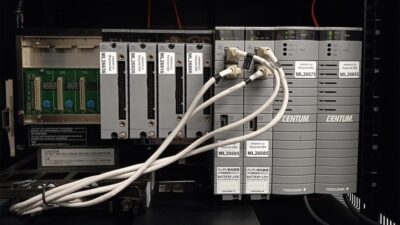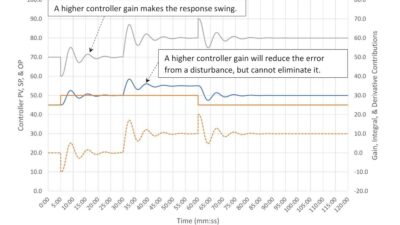Maximum reliability for industrial communication networks requires fault prediction so maintenance can be scheduled before faults occur. In the past, network gurus were needed to reactively troubleshoot industrial network faults using complex software. New tools are changing that. Industrial network protocols, such DeviceNet and Profibus, are accepted by international standards organizat...
Maximum reliability for industrial communication networks requires fault prediction so maintenance can be scheduled before faults occur. In the past, network gurus were needed to reactively troubleshoot industrial network faults using complex software. New tools are changing that.
Industrial network protocols, such DeviceNet and Profibus, are accepted by international standards organizations and supported by many companies. Compared to most Ethernet-based methods, industrial networks are:
-
Rugged, with immunity to vibration, chemicals, dirt, oil, water, electromagnetic interference, and other abuse;
-
Reliable for closed-loop error detection (data transmitting and receiving devices know when something goes wrong with a transmission). A resend occurs until a successful receipt is acknowledged; and
-
Predictable for control applications. The control system knows within milliseconds when data will be delivered. Detection of industrial network faults can occur in milliseconds, compared to tenths of seconds to several seconds before a timeout occurs on an information network. Industrial network traffic patterns transmit small blocks of data (minimum 1 byte) in regular flows, compared to large blocks of data (minimum 64 bytes) in an irregular data flow for most Ethernet implementations.
Advanced troubleshooting
Industrial networks enable simple early warning devices to be integrated into connecting network bus wire. Ideal troubleshooting allows a maintenance person to predict faults; rapidly isolate faults via subsystem isolation and monitoring (network, node, sensor, and machine); identify appropriate remedies; and expedite repairs.
Fault prediction also can validate correct network installation. Measuring the ratio of first-time successful data transmits versus transmit-retries can indicate network health. Performance degradation can be monitored and compared to benchmarks. Degradations can mean bad connectors, intermittent cables, or faulty network interface cards.
Fast troubleshooting requires quick isolation of fault sources in the machine, network, or automation system. If a piece of equipment fails to communicate, quickly identifying network health typically cuts 80-90% of the system troubleshooting time, based on customer data from SST (Waterloo, Ontario, Canada), a Woodhead Industries subsidiary.
Quick remedies require in-depth network knowledge and a large training investment, or use of intelligent diagnostic and monitoring tools.
New DeviceNet tools
Industrial networks, such as DeviceNet, have detectable transmission errors and traffic volumes. DeviceNet powers sensors and transmits data between sensors, I/O blocks, PLCs, and host computers. The first known example of an early warning system for DeviceNet is available from SST. System diagnostic components include an in-wire power-monitoring device; an in-wire data traffic-monitoring device; and a hand-held meter as an intelligent troubleshooting and repair tool.
The DeviceNet Power Monitor instrument is packaged inside a bus wire connection tee or terminator with intuitive color-coded LED indications of power quality and various fault conditions. Power Monitor shows present bus voltage conditions and record fault conditions, including power fail, power surges, brownouts, ripple, and glitches. The display can be quickly interpreted to identify corrective action.
The DeviceNet Data Traffic Monitor auto-configuring instrument is packaged inside a bus wire connection tee to indicate physical layer and low-level protocol problems. It contains data bandwidth and transmission error LED bar graphs to indicate OK, fair, and bad operating conditions. It detects bus-idle and full bandwidth usage faults, and monitors normal/good usage. It can predict faults as performance degrades and can aid troubleshooting.
Simple user interface on the Power Monitor and Traffic Monitor summarizes network power and data transmission health. Each rapidly indicates faults and records worst-case conditions for 24 hours or until reset with a magnetic screwdriver.
Guru in a box
DeviceNet NetMeter uses a patented integrated intelligence technique to summarize multiple DeviceNet bus operational variables into one health index. For those less experienced with DeviceNet, it acts as a “guru in a box” with simple indicators of actual network performance. It summarizes DeviceNet bus’ health via display of a happy face (healthy network), sad face (problematic), or neutral face (nominal) icon. NetMeter then walks the user through each fault condition and its source. Or it can record key operating parameters into nonvolatile memory for review by a control engineer off-line.
These diagnostic tools range from less than $100 to $990.
For more information, visit www.controleng.com/freeinfo , or go to www.mysst.com
| Author Information |
| Steve Montgomery, vp technology, Woodhead Industries. Comments? E-mail [email protected] |



